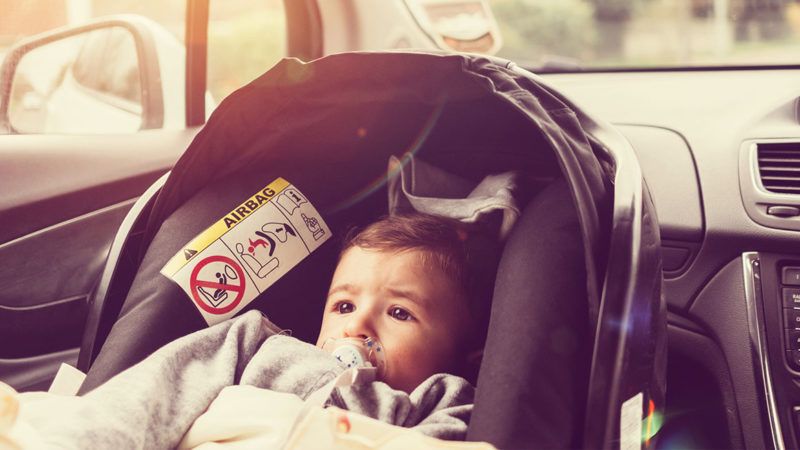Are Car Seat Laws Driving Down America's Birthrate?
While these laws are intended to save children's lives in the event of an accident, Nickerson and Solomon argue that the effect on birthrates is much bigger.

A provocative new study claims the steady upward creep in the age at which states mandate that children use car seats is prompting women to either postpone or opt out of having a third child.
The paper, published on the Social Science Research Network, by finance professors Jordan Nickerson of MIT and David Solomon of Boston College, argues that most vehicles can fit only two car seats in the back row, necessitating the purchase of a larger car to accommodate three young children at once. That added cost, they argue, disincentivizes some women from having a third child.
"We find that when a woman has two children below the car seat age, her chances of giving birth that year decline by 0.73 percentage points" below where they'd be if only one or none of her existing children were required to be in a car seat, write Nickerson and Solomon. "This represents a large decline, as the probability of giving birth for a woman age 18-35 with two children already is 9.36 [percent] in our sample."
The nationwide average minimum age at which children are allowed to ride in cars with just seat belts has risen from less than 3 in the mid-1980s to just under 8 today. This steady increase, the paper suggests, could help explain why fertility rates have declined in the last decade despite a long-running economic recovery that would normally encourage more childbirths. To tease out the impact of car seat laws, the paper controls for variables such as urban density, household income, and whether a male parent is present.
While these laws are intended to save children's lives in the event of an automobile accident, Nickerson and Solomon argue that the effect on birthrates is much bigger. The changes "prevented only 57 car crash fatalities of children nationwide in 2017," it says. "Simultaneously, they led to a permanent reduction of approximately 8,000 births in the same year, and 145,000 fewer births since 1980, with 90 [percent] of this decline being since 2000."
There are reasons one might be skeptical of Nickerson and Solomon's conclusion. They may not have controlled for all the variables that could account for the correlation they found, for example. And a commenter at the rationalist blog LessWrong questions the paper's underlying premise, noting that parents could avoid the cost of buying a larger vehicle by instead using narrower safety seats that make it possible to fit three children even in small cars.
Rent Free is a weekly newsletter from Christian Britschgi on urbanism and the fight for less regulation, more housing, more property rights, and more freedom in America's cities.


Show Comments (127)